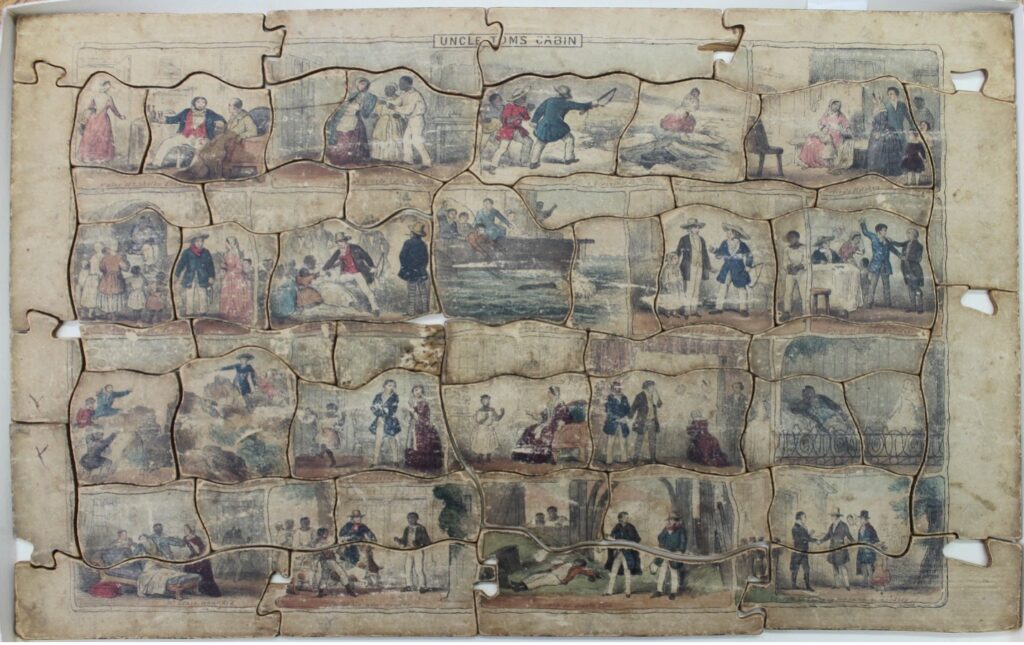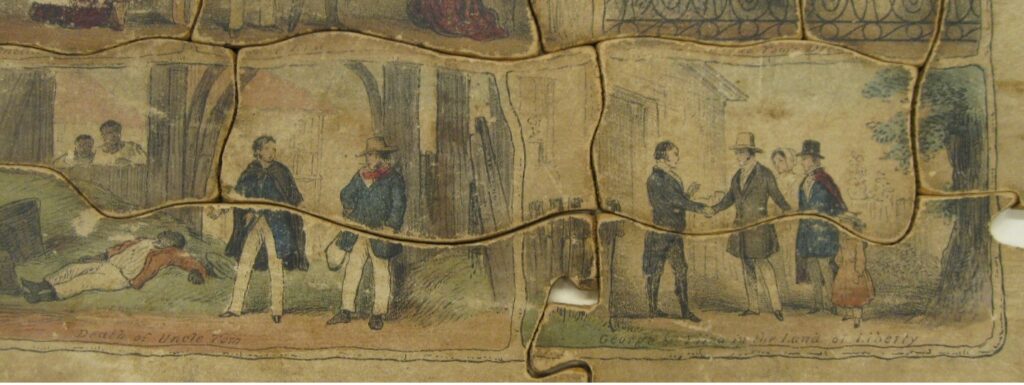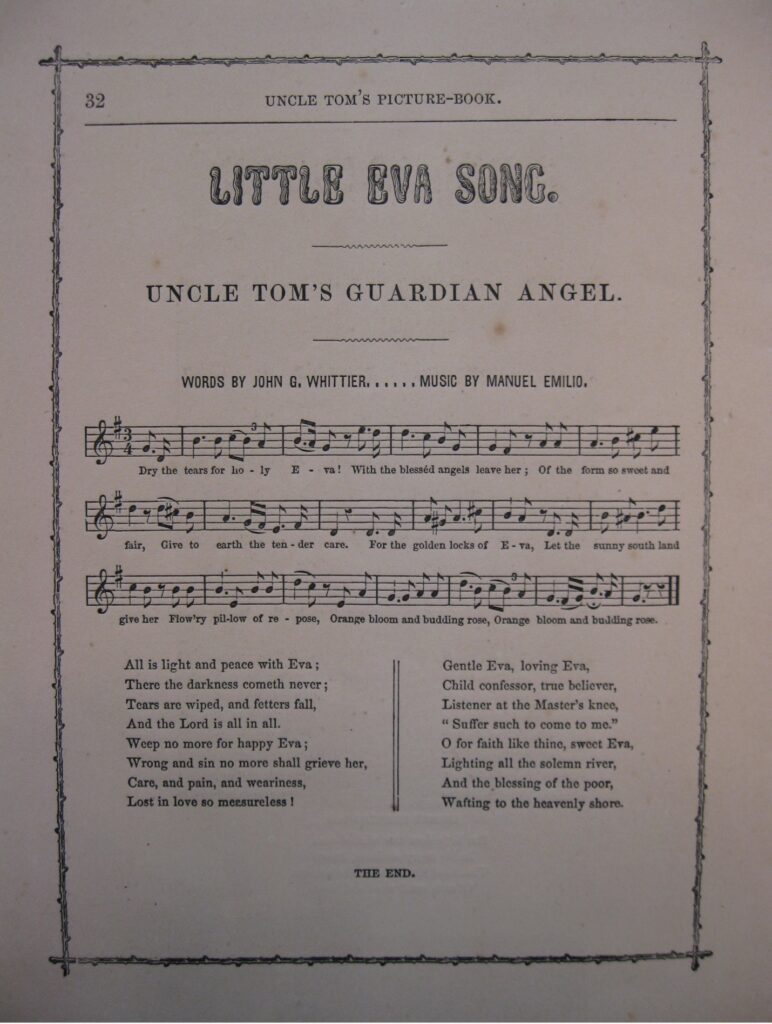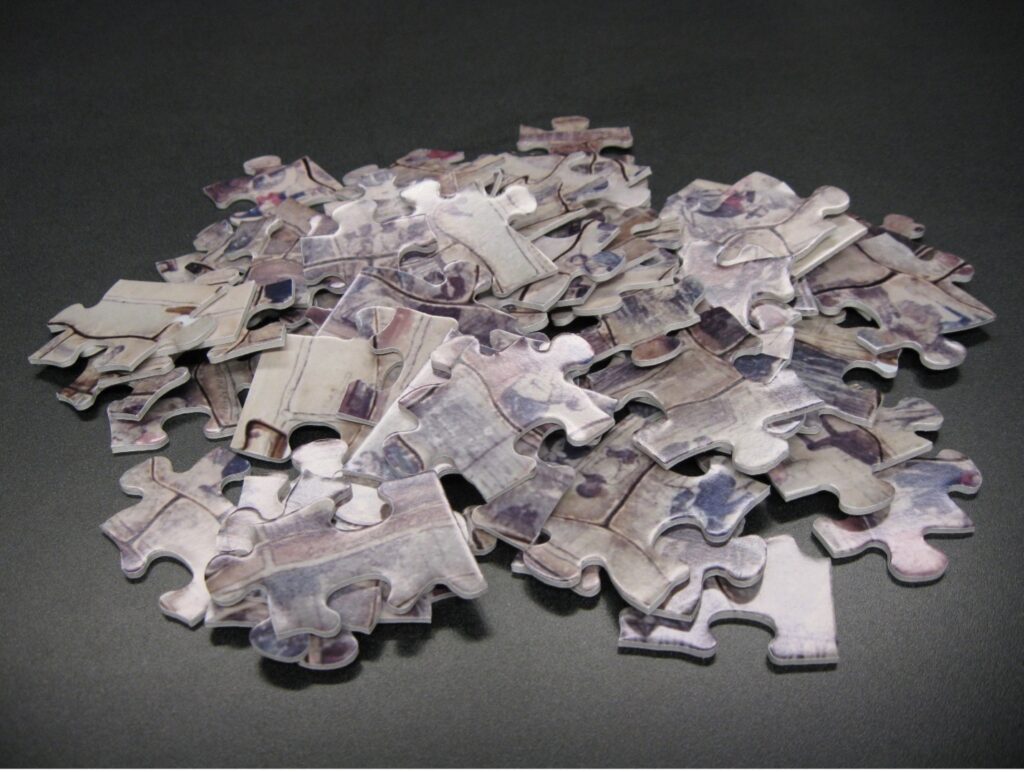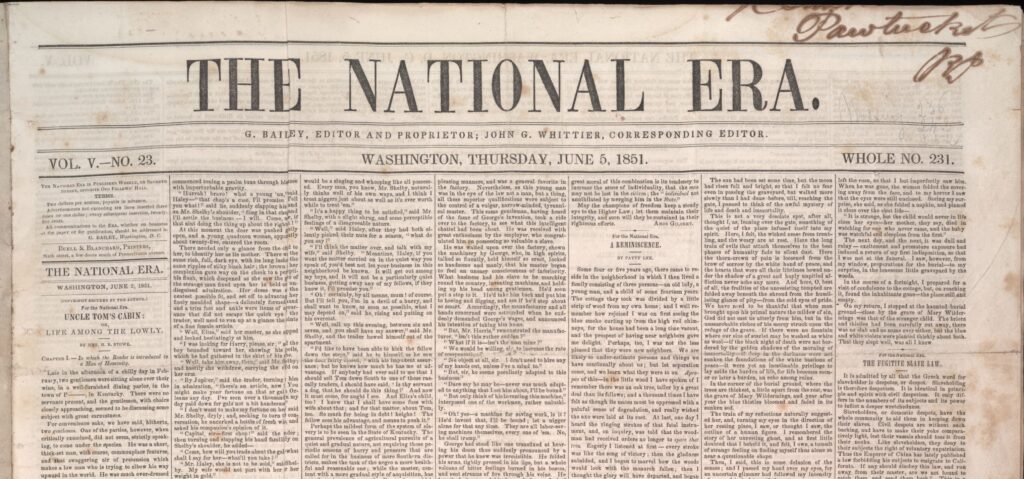Given this design of cuts, users could help themselves by assembling the edges of the puzzle first, which would then act as a frame to corral the unruly inner pieces. However, if a user took this approach, strange deformations of Stowe’s story would occur. The content depicted on the edge pieces—the sides mostly blank, the title “Uncle Tom’s Cabin” blazoned across the top, and the lower half of the lowest row of scenes stretched along the bottom—means that “Uncle Tom’s Cabin” would for a time be primarily associated with strangely mutilated human forms, cut off at the waist, as well as Tom’s dead body splayed on the ground (see previous figure). This mode of assembly would thus entail a sustained contemplation of Tom’s corpse, potentially mitigating any reassuring effect of placing the Harrises’ happy ending in the final spot of the assembled puzzle image, as the story’s culmination. A user might or might not spend significant time studying the fully assembled image, given that the compulsion to solve the puzzle would at that point have been satisfied. So the greatest intensity and duration of engagement for many puzzle users might well have been with the contingent, unsettled, and sometimes unsettling configurations that the story took in its various stages of disassembly.
Narratives do significant cultural work in how they communicate stories and to whom, including their ways of managing narrative closure and its potential for reassurance. But ideological interventions made within a narrative—such as rearranging Stowe’s story to give it a happy ending—have to contend with the potentially more radical interventions that the jigsaw puzzle form visits upon that narrative. Whatever logics of tragedy or triumph might structure a narrative when consumed in its prescribed order, the materiality of the puzzle form gleefully destabilizes them.
Acknowledgements
Thank you to Elizabeth Burgess, Director of Collections & Research at the Harriet Beecher Stowe Center, for her assistance.
Further Reading
On the history of jigsaw puzzles, see Megan A. Norcia, “Puzzling Empire: Early Puzzles and Dissected Maps as Imperial Heuristics,” Children’s Literature 37 (2009): 1-32; Anne D. Williams, The Jigsaw Puzzle: Piecing Together a History (New York: Berkeley Books, 2004); and Linda Hanna, The English Jigsaw Puzzle (London: Wayland Publishers, 1972), where the William Cowper quote can be found. On the relationship between games—including puzzles—and nineteenth-century U.S. literature and culture, see Douglas A. Guerra, Slantwise Moves: Games, Literature, and Social Invention in Nineteenth-Century America (Philadelphia: University of Pennsylvania Press, 2018).
Many aspects of Uncle Tom’s Cabin’s reception history are covered in Barbara Hochman, “Uncle Tom’s Cabin” and the Reading Revolution: Race, Literacy, Childhood, and Fiction, 1851-1911 (Amherst: University of Massachusetts Press, 2011). For more on Uncle Tom’s Cabin and the nineteenth-century construction of childhood, see Robin Bernstein, Racial Innocence: Performing American Childhood from Slavery to Civil Rights (New York: New York University Press, 2011).
On narrative, including the function of endings, see Peter Brooks, Reading for the Plot: Design and Intention in Narrative (New York: Alfred A. Knopf, 1984); and, more recently, Brian Richardson, A Poetics of Plot for the Twenty-First Century: Theorizing Unruly Narratives (Columbus: The Ohio State University Press, 2019). For an analogue to jigsaw puzzles’ disruption of linear narrative, in the phenomenon of so-called “puzzle films,” see Warren Buckland, ed., Hollywood Puzzle Films (New York: Routledge, 2014).
This article originally appeared in January 2023.
Patricia Jane Roylance is an associate professor of English at Syracuse University, and author of Eclipse of Empires: World History in Nineteenth-Century U.S. Literature and Culture (Tuscaloosa: University of Alabama Press, 2013). Her current book project, The Textures of Time in Nineteenth-Century U.S. Media, explores the temporalities associated with various media forms, including jigsaw puzzles.



